What's the difference between wood filler and wood putty? In this article, you'll learn when to use wood filler or wood putty and why!

The choice between wood filler and wood putty can be confusing. Though both of these products are meant to fill holes and cracks in wood, they're used for different purposes.
Wood filler is a sandable substance that dries hard and is ideal for repairing larger imperfections on both interior and exterior surfaces. Conversely, wood putty is a pliable material, best suited for filling small gaps and nail holes in interior projects.
I'll put wood filler and wood putty to the test in a head-to-head comparison so you can see the difference!
This post contains affiliate links for your convenience. Purchases made through these links may earn me a small commission at no additional cost to you. Please visit my disclosures page for more information.
What is the Difference Between Wood Filler and Wood Putty?
You can use both wood filler and wood putty to correct minor cracks and blemishes in your project. But understanding their differences will lead you to more successful result (and help you remedy some major mess-ups!)
Consistency
Wood filler dries to a hard surface. This texture allows you to apply wood filler to large cracks in a project. Then, you can sand, paint, and forget it! Wood filler will provide some structural support, although it does not replace serious repair.
Wood putty is more pliable like clay. This pliability allows wood putty to be applied to a project after it has been stained and finished. However, due to the softer texture, wood putty is not easily sanded.
Indoor vs Outdoor
Generally, wood filler hardens to a sandable consistency. While this works well for indoor projects, outdoor projects tend to separate from the wood filler as the wood expands and contracts with the seasons.
On the other hand, the wood putty has a more pliable texture even after it dries. This allows the putty to shift with the wood, potentially avoiding cracks and separation. Putty is commonly used on hardwood floors to fill gaps or knots, because it can flex instead of breaking apart when it's walked on.
Water-based wood filler will return to its soft, spreadable form when it comes in contact with water, so it's not a great choice for outdoor applications. Look for a solvent-based filler that is labeled for outdoor use, or stick with putty.
Painting and Staining
Some wood fillers can be stained, and almost all are designed to be painted. Apply wood filler before you paint or stain. Check the label first, and do a quick test on a scrap of wood. Your stain may interact differently with the filler than the surrounding wood, leading to a blotchy finish.
Apply wood putty after the stain. Wood putty comes in all sorts of colors to match different species of wood or stain colors. You can even combine colors to create a custom match that will blend in perfectly!
Wood Filler
What is Wood Filler?
Wood filler is like the first aid kit for your wood projects. If you end up with a split in your project during construction, you can use your wood filler to patch the crack. It can also be used to hide nail or screw holes, so your painted project looks flawless.
There are several different types of wood filler that come in two main forms: water-based and solvent-based. Water-based is suited for indoor applications, while solvent-based filler will be more resilient outdoors.
When Should I Use a Wood Filler?
Use wood filler on a project that needs a fairly large repair before painting or staining. You can patch nail or screw holes, gaps between boards, or fix a dent with wood filler!
For example, say you're building a project that called for countersunk screws. You can leave them visible, or you can hide the screws in the wood. Fill the holes, then sand it down flush with the surrounding surface and paint it to disguise the patch.
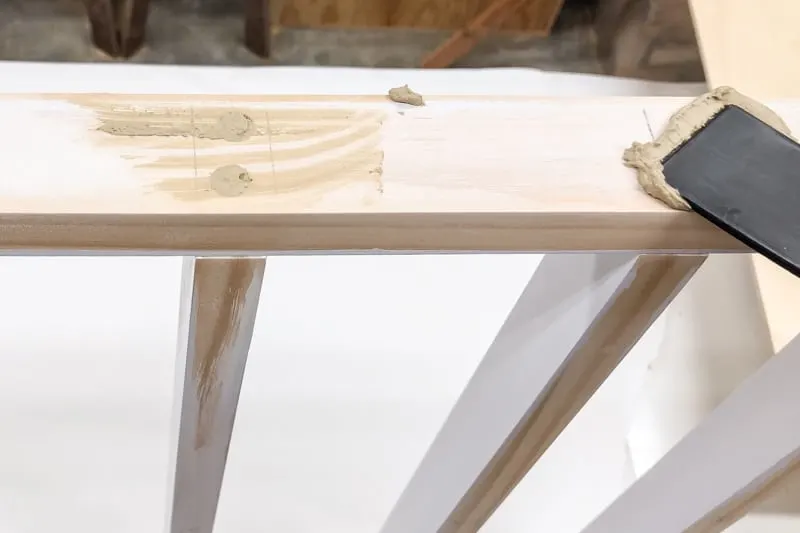
You can also use wood filler to cover up exposed plywood edges. This is a much messier process than edge banding, but works in a pinch! I'll typically do this in areas where the corners and edges will be rubbed frequently, like the top of this entryway bench. Edge banding can catch and peel off, so wood filler will hold up better in this area.
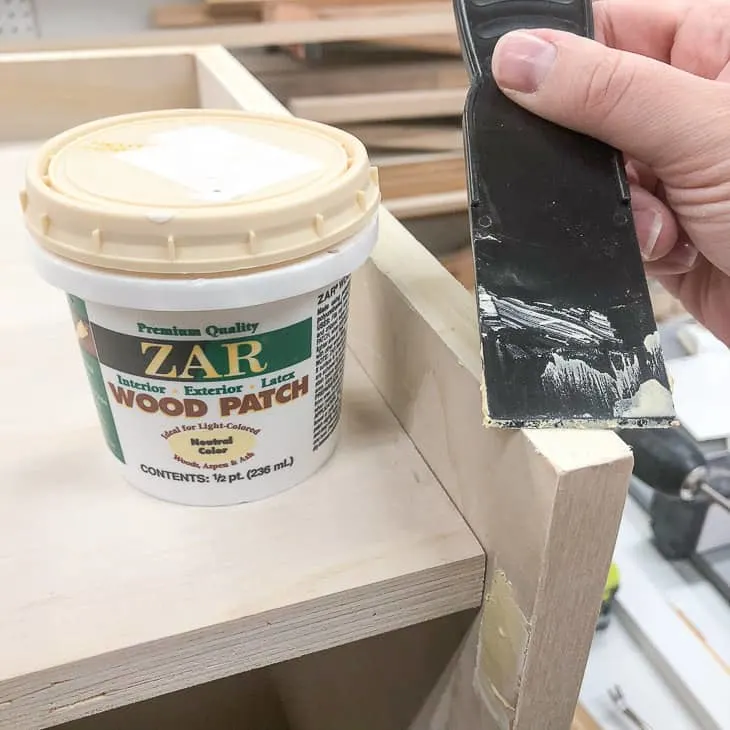
How to Use Wood Filler
Check out this article for a full tutorial on how to use wood filler. But here are the basic steps:
- Choose the correct type of filler for the application - For indoor use, choose a water-based wood filler. For outdoor application, you may want a tougher, solvent-based filler.
- Prepare the site - Make sure to remove any sanding dust or loose paint chips from the area to be filled.
- Apply liberally - You want to drown that defect in filler! Air bubbles or cavities in the filler will cause a sunken area to form when it dries. Most wood fillers will also shrink, so overfill the hole slightly to prevent issues.
- Scrape off excess - Smooth out the area and feather the edges to make sanding easier later.
- Sand and paint - After the filler has dried, you can sand it down smoothly so it's even with the surrounding wood. If you've got a good finish - great! If not, apply more filler to the area and repeat.
How to Make DIY Wood Filler
Want to know a clever way to make DIY wood filler that matches your project perfectly? Here's how.
Round up some fine sawdust from your project. Usually I just dump out the dust bag on my sanding tools. Then, mix this sawdust with wood glue until you get an easily workable paste. Apply your DIY wood filler liberally to your project. Viola! A perfect match!
Check out this article for more clever uses for sawdust!
Frequently Asked Questions about Wood Filler
How long does wood filler take to dry?
Wood filler drying times can vary, depending on the amount you use and the climate you're working in. However, many products will dry in as fast as 15 minutes. Some wood fillers change color as it dries, so you know when it's ready for sanding.
Can you screw into wood filler?
While this isn't commonly recommended, you can screw into some types of wood filler. Be sure the filler has fully dried and cured first. Predrill your hole and test to see if the filler crumbles before adding screws.
How do you fill large holes and gaps with wood filler?
You can use masking tape to create a form or dam to shape a dented corner or edge, similar to pouring cement. Apply multiple layers of wood filler and allow each layer to fully dry before adding the next one. Then sand the patch to match the surrounding area.

What's the best wood filler?
The best wood filler is the one that works for your job. Minwax, Elmer’s, and DAP are all quality brands that I've used in the past with great success.
Wood Putty
While wood putty has similarities to wood filler, there are vital differences you need to know so you don't use the wrong one for your project.
What is Wood Putty?
Wood putty is a malleable compound used to repair small dents and scratches on a finished piece of furniture. It can be found in sticks that resemble crayons, or small jars. They come in a variety of wood colors and tones, so you can choose a perfect match to your project.

When Should I Use Wood Putty?
Use wood putty for pieces with a natural wood finish that requires a small repair. Maybe you've got tiny gaps in your hardwood flooring, or the mitered corner of your picture frame has started to separate. These are good projects for wood putty.

This maple board cracked along the grain. I used a wood putty stick in a matching color to fill in the crack, then scraped off the excess. The repair is almost invisible because it blends in with the surrounding wood.
For larger defects, it might be best to sand everything down and use a hardening wood filler. Or just take the plunge and replace the broken part with real wood.
How to Use Wood Putty
Using wood putty is similar to using wood filler, with a few tweaks. Here are some guidelines for applying wood putty:
- Choose the right wood putty - Some putties dry faster than others. Also, you'll want to take your time to make sure the colors match. Try testing in an inconspicuous place first.
- Prepare the site - You don't want loose debris around the site. Use a clean rag to wipe up any dust or dirt and make sure the area is dry.
- Work the putty into the site - Make sure the defect is overflowing with putty. If you're using a stick, rub across the crack, not down its length, to fill the void. Then scrape off the excess with an old credit card or a scraper tool.
- Allow putty to cure - Most putty isn't going to harden. However, some putty will have an initial curing phase where it becomes less gooey.
Here's a great video on wood putty and wood filler and how they work.
Frequently Asked Questions about Wood Putty
Now, let's go over some commonly asked questions about wood putty:
Can you stain wood putty?
Generally, no. For this reason, wood putty will often come in many different colors so that you can match the tones with your stain.
How long does wood putty take to dry?
Many wood putties never fully harden. They are designed to be worked into a small defect and can expand and contract with wood movement. However, wood putty will cure in a sense - this can take up to 24 hours or more.
Does wood putty harden?
Wood putty does not harden to a sandable surface. Some two-part putties harden; however, these will need to be painted, as they won't typically match the surface of the wood.
What's the Best Wood Putty?
Before you shop for wood putty, take note of several things: What type of surface are you covering? What is the brand of stain? How much area needs to be filled? I like using Mohawk Fill Stiks for the occasional touch-up on natural wood surfaces, and Minwax putty for stained wood projects.
I hope this article answered any questions you might have about wood filler vs wood putty. They both deserve a place in the workshop for different applications. You will find yourself turning to these products again and again - they're like a magic eraser for woodworking!
Check out these other woodworking tutorials!
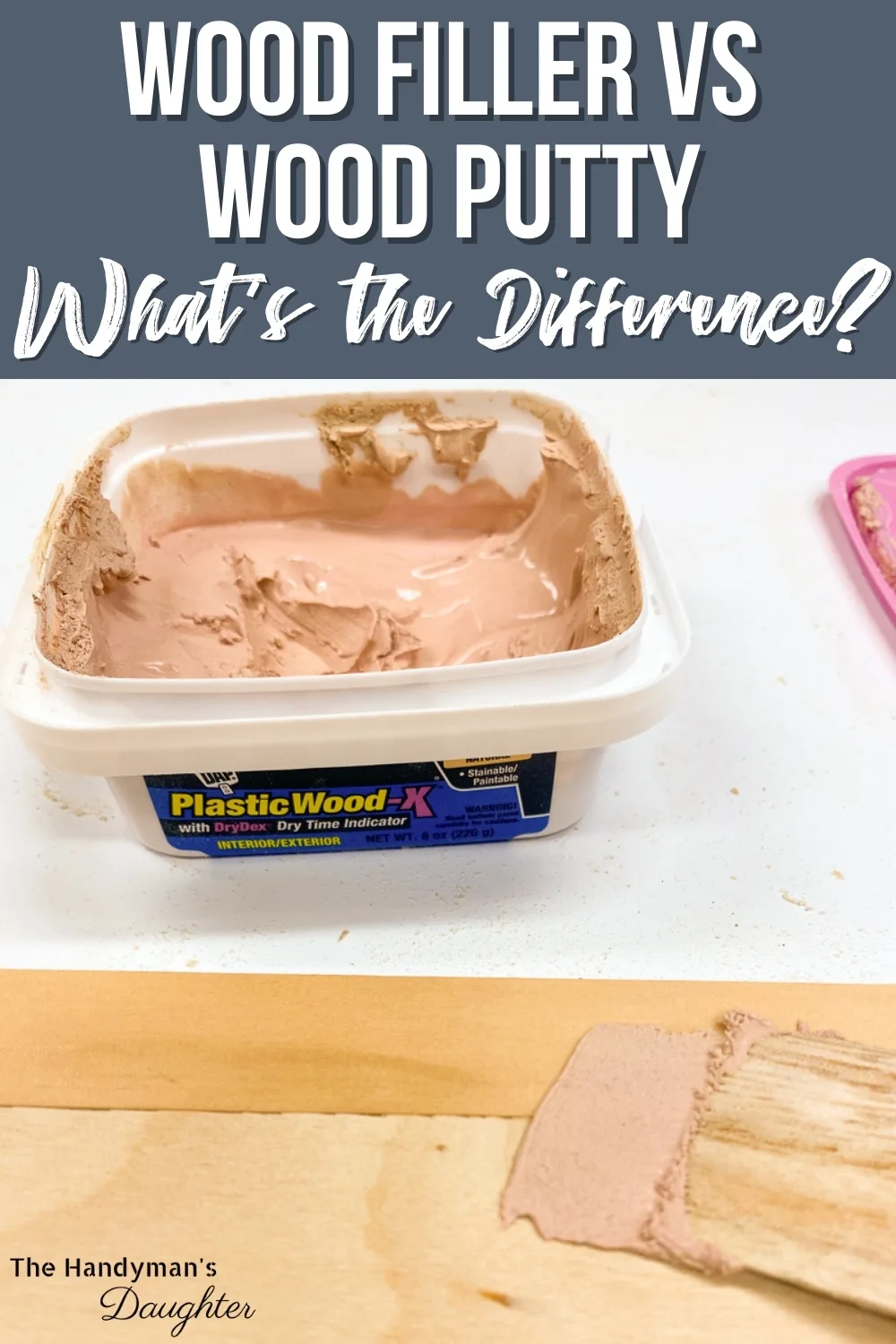



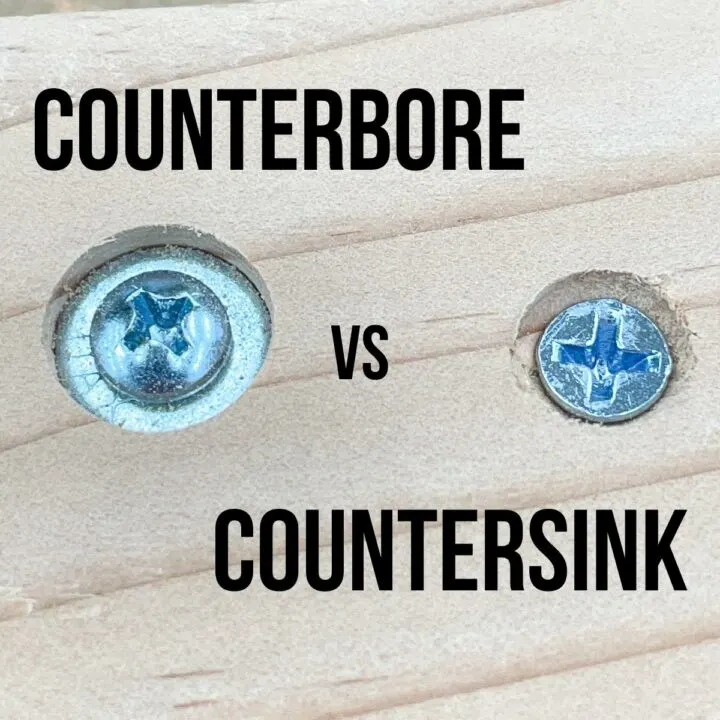
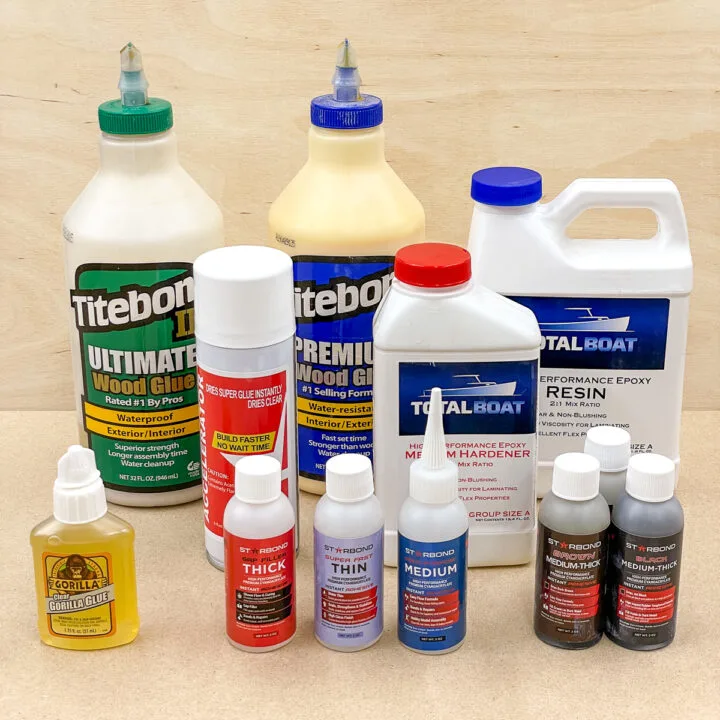

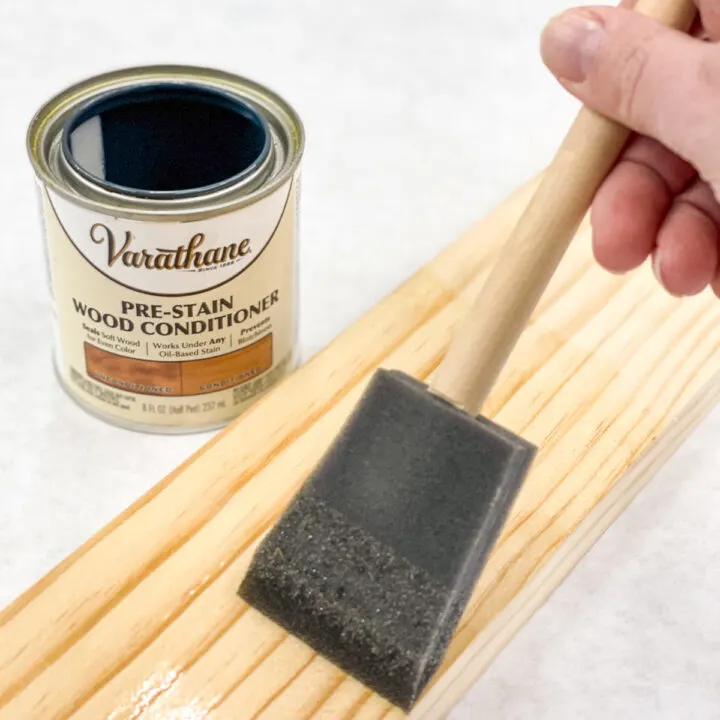

Sarah
Friday 26th of November 2021
Wow, wow, wow! This is amazing content, I feel totally educated in wood patching now. Like really, thank you!
Sheila Storms
Monday 6th of September 2021
Thank you Vineta, for that clear article on wood fillers and putty. I'm a carpenter's daughter and so it's especially fun to have found you here! :-)